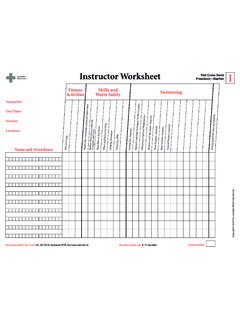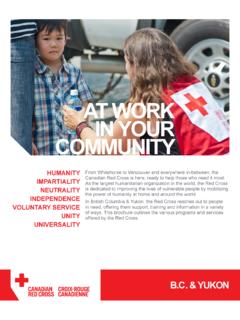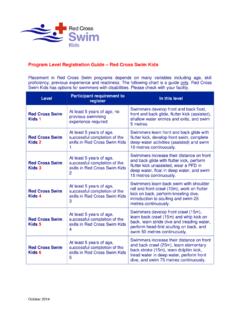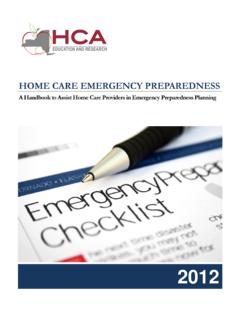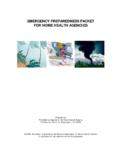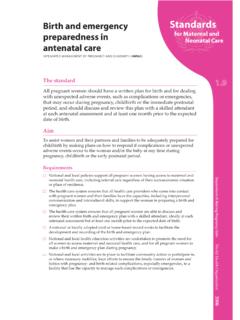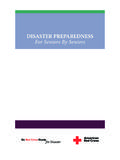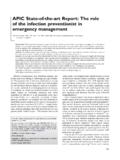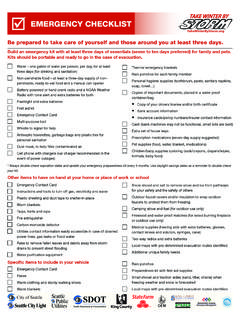Transcription of Your emergency preparedness guide
1 your emergency preparedness your family prepared?53955 4/17/06 6:56 PM Page 1 You should be prepared to takecare of yourself and your familyfor a minimum of 72 hours. If a disaster happens in yourcommunity, it may takeemergency workers some time to get to you as they help those in desperate taking a few simple steps today, you can become better prepared toface a range of emergencies anytime, anywhere. Use this guide to createyour own emergency plan. Use the checklists to build a 72-hour emergencykit. These basic steps will help you to take care of yourself and your lovedones during an emergency .
2 Our partnersThis publication was developed in collaboration with:This publication is also available in multiple formats (audio, Braille, largeprint and diskette). To order please call:1 800 O-Canada (1 800 622-6232)TTY: 1 800 926-9105 Her Majesty the Queen in right of Canada, 2006 Page 1 ISBN # PS4-26/2005 0-662-69515-1 ASSOCIATION CANADIENNE DES CHEFS DE POLICECANADIAN ASSOCIATION OF CHIEFS OF POLICEC anadian Associationof Fire ChiefsCanadian Associationof Chiefs of Police53955 4/20/06 4:01 PM Page 2 Table of contentsStep 1. Know the risks. Know your 3 Step 2.
3 Make a planPage 4 Household planPage 5 emergency contact informationPage 8 emergency instructionsPage 11 Step 3. Prepare a kitPage 12 Resources Resources Page 15 your emergency preparedness guide 2 emergency preparedness is a sharedresponsibility. While governments at all levelsare working hard to keep Canada safe,individual Canadians also have an importantrole to play. By taking a few simple stepstoday, together we are building safercommunities for tomorrow. The Honourable Stockwell Day Minister of Public Safety53955 4/20/06 4:01 PM Page 3 Although the consequences of disasters can be similar, knowing the risksspecific to your region can help you prepare yourself better.
4 Across Canadawe face a number of hazards, from earthquakes in British Columbia, toblizzards in Nunavut, to hurricanes in New Brunswick. In addition to naturaldisasters there are other types of risks, such as blackouts, industrial ortransportation accidents, and the possibility of acts of terrorism on Canadiansoil. We need to prepare for all types of emergencies. The following list contains natural risks and other hazards. Check off therisks that are most likely in your community. m Blackoutm Landslide or avalanchem Blizzardm Stormm Droughtm Terrorismm Earthquakem Tornadom Floodm Transportation accidentm Hazardous materials and spillsm Tsunami or storm surgem Hurricanem Wildfirem Industrial accidentm Other_____m Infectious disease outbreakTo learn more about emergency preparedness , or to order self-helppublications on planning for earthquakes, storms, power outages and other risks, call: 1 800 O-Canada (1 800 622-6232) TTY: 1 800 926-9105 Monday to Friday, 8 to 8 local time Or visit.
5 31 STEPKnow the your 4/17/06 6:56 PM Page 4 Every Canadian household needs an emergency plan. It will help you andyour family know what to do in case of an emergency . Remember, your family may not be together when a disaster occurs. Planhow to meet or contact one another and discuss what you would do indifferent the following pages to create your plan. Most of this information can befilled out on your own. You may need to get some information from this document in an easy-to-find, easy-to-remember place (for example,with your emergency kit).
6 You might also want to make a photocopy of thisplan and keep it in your car and/or at work. your emergency preparedness guide 42 STEPMake a planSafe idea: Learn about first aid. You could save a life. Along with making emergency plans and preparing an emergencykit, knowing first aid could save a life. Contact your local CanadianRed Cross or St. John Ambulance to find out about first aidcourses offered in your area. 53955 4/17/06 6:56 PM Page 5 Household planEscape routes Plan emergency exits from each room of your home. Try to think of twopossibilities for each room.
7 If you live in an apartment, do not plan to use theelevators. Also, identify an escape route from your neighbourhood in case youare ordered to exits from home: _____Escape route from neighbourhood:_____Meeting places Identify a safe place where everyone should meet if they have to leavehome during an meeting place near home: _____Page 5 Safe idea: Make copies of important documentsMake copies of birth and marriage certificates, passports, licences,wills, land deeds and insurance. Keep them in a safe place inside yourhome. As well, keep copies in a safe place outside your home.
8 Youmight want to put them in a safety deposit box or give them to friendsand family who live out of : The meeting place should be on the same side of the streetas your home. This way you don t need to cross the streetinto traffic or in front of fire trucks or ambulances during : Make sure that everyone in your home knows how to get outquickly. Practice at least once a year with everyone. 53955 4/17/06 6:56 PM Page 6 ChildrenvAsk your children s school or daycare about their emergency policies. Findout how they will communicate with families during an out what type of authorization the school or daycare requires to releaseyour children to a designated person if you can t pick them up sure the school or daycare has updated contact information forparents, caregivers and designated person 1: _____ Phone:_____Designated person 2: _____ Phone.
9 _____People with special healthneedsvEstablish a personal support network of friends, relatives, health-careproviders, co-workers and neighbours who understand your special down details about your medical conditions, allergies, surgeries, family medical history, medications, health screenings, recent vaccinations, emergency contacts and insurance information. vTalk to your doctor about preparing a grab-and-go bag with a two-weeksupply of medications and medical supplies, if possible. Include prescriptions and medical documents. Remember that pharmacies may be closed for some time, even after an emergency is information:_____Medications and medical equipment:_____Grab-and-go bag location:_____Your emergency preparedness guide 653955 4/17/06 6:56 PM Page 7 Page 7 Plan for petsRemember that pets are not allowed in some public shelters or hotels.
10 Plan to take your pets with you to a relative or friend s home, or identify a pet-friendly hotel or pet boarding facilities in : _____Plan for specific risksWhat should you do in case of an earthquake? Flood? Blackout? Write downinstructions for the risks that are most likely to occur in your Government of Canada provides a series of self-help publications onspecific emergencies. They can be downloaded at free of charge by phoning 1 800 O-Canada (1 800 622-6232)TTY: 1 800 safety planWork with your neighbours to make sure everyone is taken care of in yourneighbourhood.

